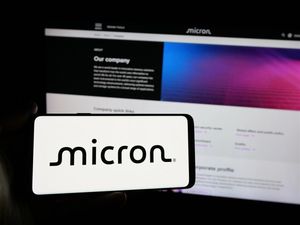Links of ovarian cancer to baby powder use raise concerns about use in cosmetics, food, drugs
A panel of medical experts convened by the U.S. Food & Drug Administration urged the agency to study and adopt new standards to prohibit the use of talc in consumer products such as gum, candy, rice and pharmaceuticals.
Many of the experts cited the more than 30 years of studies showing an association between talc use and ovarian cancer, which led Johnson & Johnson (NYSE: JNJ) to remove the company’s iconic body powders from the market in recent years.
“It’s clear (talc) is carcinogenic and inflammatory and there’s very little doubt about this,” said Dr. George Tidmarsh, an acclaimed pediatric neonatologist and professor at Stanford University. “In my opinion, it’s not a matter of if talc should be removed from the U.S. market, it’s a matter of how and when. It’s a dangerous substance.”
Dr. Tidmarsh noted that the work of several of the experts on the panel, such as Dr. Daniel Cramer of Brigham and Women’s Hospital and Harvard Medical School, provided the foundational basis showing the association between talc and ovarian cancer. In 1982, Dr. Cramer was the first clinician to publish a peer-reviewed study that revealed at least an 82% increased risk of ovarian cancer among women who regularly used talc-based powders for feminine hygiene.
Since that time, more than 40 studies have been published supporting those findings. In addition, hundreds of tests, including those conducted by the FDA, have revealed the presence of asbestos in cosmetic talc, further increasing the carcinogenic risk of any talc exposure.
Last year, the National Institutes of Health affirmed what the organization termed “compelling evidence that genital talc use is associated with an increased risk of ovarian cancer.” In 2022, the Ovarian Cancer Association Consortium, consisting of top researchers from leading cancer research hospitals around the world, called the genital exposure to talcum powder a “well established ovarian cancer risk factor,” a similar position now taken by the National Academy of Medicine.
Several members of the FDA’s panel cited last year’s announcement by the International Agency for Research on Cancer that raised the organization’s classification of the cancer risk stemming from genital talc use from “possible” to “probable.”
“It was encouraging to see this distinguished panel with representatives from the FDA, NIH and the nation’s leading hospitals and medical schools agree that there remains little doubt about the causal link between talc and cancer," says Andy Birchfield of the Beasley Allen Law Firm, among the law firms with ovarian cancer lawsuits against Johnson & Johnson pending in a New Jersey federal court, as well as in other state courts. “In recent years, the science showing the dangers of talc exposure to women has only increased, with no new studies to indicate otherwise, and we look forward to presenting that evidence in court at the earliest possible opportunity.”
View source version on businesswire.com: https://www.businesswire.com/news/home/20250523174238/en/
“It’s clear (talc) is carcinogenic and inflammatory and there’s very little doubt about this,” said Dr. George Tidmarsh, an acclaimed pediatric neonatologist and professor at Stanford University.
Contacts
Media Contact:
Mike Androvett
800-559-4534
mike@androvett.com





